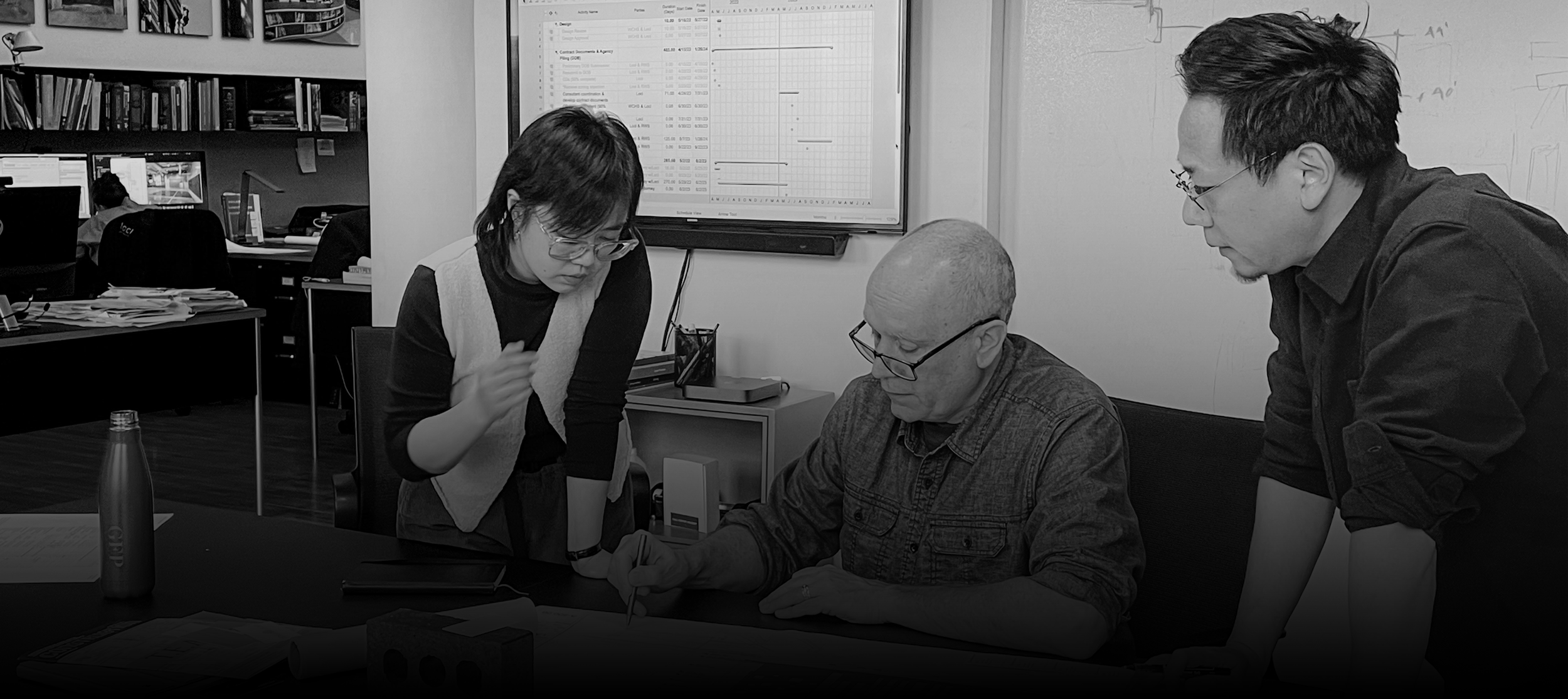Discovery
The “discovery” or programming phase includes meetings and assessments of the site conditions to understand a project’s opportunities and challenges. We initiate a written and verbal dialogue with our clients that extends throughout the project, aligning their priorities with appropriate design strategies. Our role is to use these strategies to translate a well articulated set of goals into an inspired vision - one that goes beyond meeting the basic requirements, transcending our clients’ expectations.
Exploration
After gathering and organizing all the necessary data, we start forming our initial ideas. We develop a list of spaces with approximate floor areas for the client to review. We create massing studies, conduct a code and zoning review, prepare space layouts, evaluate how the program will fit on the site, etc. We work with clients to articulate why certain design approaches resonate with their project goals, guiding them towards a clear and cohesive solution.
Presentation
We develop materials to communicate the design concepts we’re exploring, using tools such as diagrams, 3D renderings, photographs, and physical models to support informed, collaborative dialogue. As with any creative process, there’s a touch of nervous anticipation—this is the first time we’re translating the client’s goals into visual form. These tools not only reflect what we’ve heard, but also introduce a shared visual language to guide the project as it evolves.
Development
After presenting our initial ideas and gathering feedback, we use that input to develop more refined design iterations. We don’t expect perfection from the outset—stakeholder priorities often come into sharper focus through ongoing conversations and collaboration. Revisions may stem from practical constraints or new insights that emerge during internal reviews. Drawing on our expertise, we propose thoughtful solutions and enjoy exploring a wide range of possibilities with our clients, often leading to a fresh perspective on what the project can ultimately achieve.
Realization
This stage is just what it sounds like—the point where everything from the earlier phases comes together in a completed project. It represents the culmination of our collective efforts. Whether you see the process as a sequence of steps or as a more fluid, holistic journey, Realization is not a fixed endpoint. It’s part of an ongoing cycle that includes Discovery, Exploration, Presentation, and Development. With each return to this cycle, the work is refined and strengthened by new insights and feedback. By working together as partners in a thoughtful, iterative process, we bring your vision to life—translating your goals into a compelling and inspired project.
















